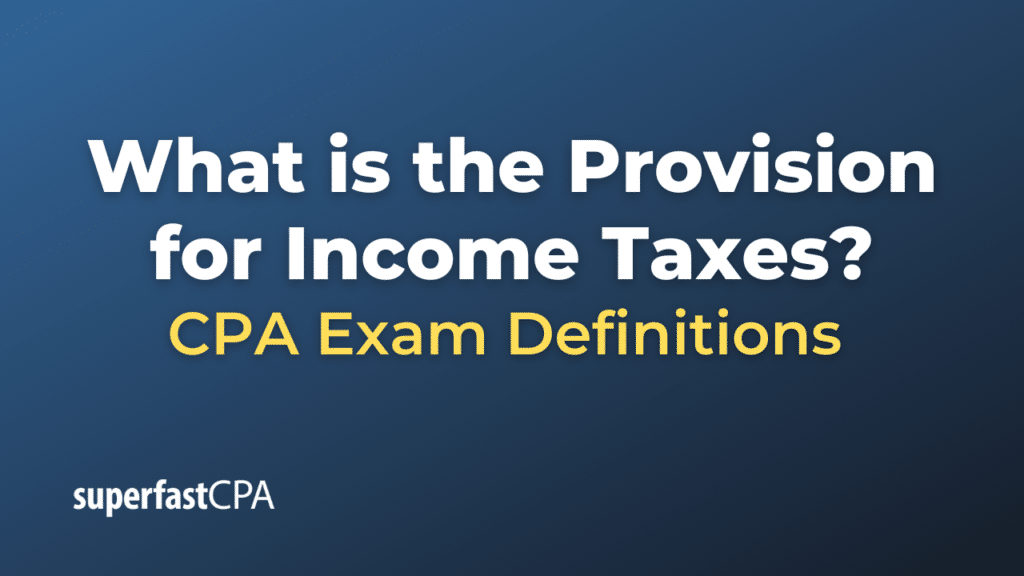Provision for Income Taxes
The provision for income taxes is an estimate of the income taxes a company expects to pay in a given fiscal year. It’s considered an expense and is listed on the income statement before the calculation of net income.
The provision for income taxes is usually calculated based on the company’s earnings before tax (EBT), multiplied by the applicable tax rate. It includes estimates for federal, state, and sometimes international taxes, and it can be affected by certain business expenses and credits that are tax-deductible.
However, the provision for income taxes is more than just a simple calculation of taxable income times the tax rate. Companies often have complicated tax situations, with deferred tax assets, deferred tax liabilities, and different rules in the various jurisdictions where they operate. Therefore, determining the provision for income taxes often involves significant judgement and expertise in tax laws.
Importantly, the provision for income taxes is not the actual payment of taxes, but the company’s estimation of what it will owe in taxes for the year. The actual tax payment will be reflected in the company’s cash flow statement under the operating activities section.
Please note that the rules and regulations related to income taxes can vary significantly across countries and jurisdictions.
Example of the Provision for Income Taxes
Let’s look at an example. Suppose XYZ Corp., a U.S. based company, had an income before taxes of $500,000 in the year 2023. Assume the corporate tax rate is 21%.
- Calculating the Provision for Income Taxes: The provision for income taxes would be calculated as the income before taxes multiplied by the corporate tax rate. So, $500,000 * 21% = $105,000. This means XYZ Corp. estimates it will owe $105,000 in income taxes for the year 2023.
- Reporting the Provision for Income Taxes: On the income statement, the provision for income taxes of $105,000 would be subtracted from the income before taxes of $500,000 to arrive at the net income. So, the net income would be $500,000 – $105,000 = $395,000.
- Actual Tax Payment: Now, let’s say that when XYZ Corp. prepared its tax return, it found out that due to various tax credits and deductions, it only had to pay $95,000 in taxes for the year 2023. This actual tax payment would be reflected in the company’s 2023 cash flow statement.
- Reconciliation: In the subsequent year (2024), XYZ Corp. would need to reconcile its provision for income taxes with the actual tax payment. The difference of $10,000 ($105,000 – $95,000) would be added back to the net income of 2024, reducing the provision for income taxes for that year.
This is a simplified example. In real-world scenarios, the calculation of the provision for income taxes can be quite complex due to factors such as deferred tax assets and liabilities, varying tax rates in different jurisdictions, tax credits and deductions, and changes in tax laws. It is advisable to seek professional help when dealing with complex tax matters.













